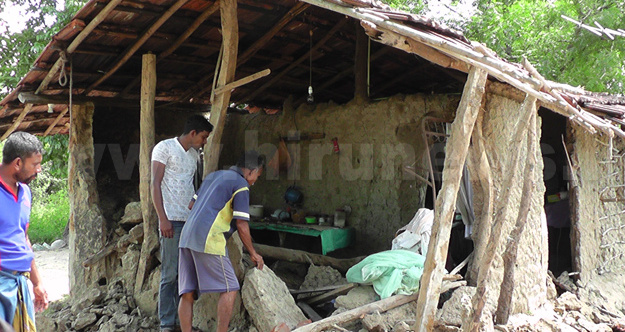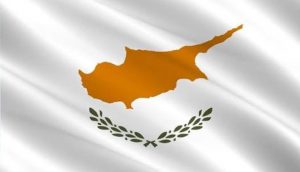President concerned Students affected by Elephants

Sri Lanka’s Presidential Fund has decided to provide financial assistance to continue the education of children from families affected by daily incidents of elephant intrusions into their villages, according to a statement from the President’s Media Division (PMD). “A human-elephant conflict has resulted in the deaths of 182 humans and 484 pachyderms in 2023,” the government reported.
Children from households that have experienced damage to lives, property or crops due to the elephant attacks can also apply for this aid.
The PMD stated that preference will be given to families that have lost a member or have individuals harmed because of elephant invasions.
According to the most recent count, Sri Lanka is home to approximately 7,000 elephants, though some believe the actual elephant population might be greater. Official data indicate a rising incidence of conflicts between humans and elephants in recent years.
While the eligibility for this financial assistance will be determined based on the observations of the respective Divisional Secretaries, to qualify for this benefit, “Families must have children pursuing education from Grade 1 up to the G.C.E. Ordinary Level or Advanced Level,” said PMD.
“Under this initiative, selected students from Grade 1 to Grade 11 will receive a monthly allowance of LKR 3,000 for a maximum period of 12 months, while selected students in Grades 12 and 13 will receive LKR 5,000 per month for the same duration. The financial assistance is expected to be disbursed starting from April 1, 2025.” It’s said.
Human-elephant conflict poses a significant challenge in Sri Lanka, affecting numerous villages, particularly in the North Central and North Western regions. This conflict arises primarily due to habitat loss, increased agricultural activities, and encroachment into elephant territories.
Districts like Anuradhapura, Polonnaruwa, North Western Province, and Central Province are escalating human-elephant conflict in these regions, underscoring the urgent need for effective mitigation strategies to ensure the safety and livelihoods of affected communities while promoting the conservation of Sri Lanka’s elephant population.
Located in the North Central Province, Anuradhapura is a major hotspot for human-elephant conflict. In 2022, the district recorded 37 human fatalities resulting from elephant encounters, accounting for approximately 25% of all such deaths nationwide that year.
Additionally, 90 elephants were killed in Anuradhapura during the same period.
Polonnaruwa District: Also in the North Central Province, Polonnaruwa faces significant challenges with HEC. In 2022, the district experienced 19 human deaths and 73 elephant deaths due to conflicts. The region’s dry zone climate and high poverty rates exacerbate the issue, making it a critical area for intervention.
North Western Province: Villages in this province are frequently affected by elephant raids, especially during dry seasons when food is scarce in their natural habitats. The expansion of agricultural lands and human settlements into traditional elephant territories has intensified In 2024, Sri Lanka faced significant challenges due to elephant-related incidents, resulting in both human casualties and substantial agricultural losses.
The Department of Wildlife Conservation reported 154 human deaths attributed to elephant attacks in 2024. Notably, in November 2024, two individuals were killed in separate incidents in Anuradhapura.
A 41-year-old Navy officer was fatally attacked near the Punewa Naval Base in Medawachchiya. A 69-year-old woman succumbed to injuries following an attack in Mahasengama, Galenbindunuwewa. these conflicts.
The year also saw a concerning number of elephant deaths, with reports indicating over 370 fatalities. The causes of these deaths varied, including: Gunshots, Electrocution , Explosives hidden in food ,Train accidents , poisoning, Drowning, and falls into agro-wells.
The year also saw a concerning number of elephant deaths, with reports indicating over 370 fatalities. The causes of these deaths varied, including: Gunshots, Electrocution , Explosives hidden in food , Train accidents , poisoning, Drowning, and falls into agro-wells.
While specific figures for crop losses exclusively caused by elephant attacks in 2024 are not readily available, the broader impact of wildlife on agriculture is substantial. A survey by the Hector Kobbekaduwa Agrarian Research and Training Institute (HARTI) indicated that Sri Lanka incurs annual losses between Rs. 17 – 20 billion due to crop damage by various animals, including elephants.
Some citizens say that this step is a good step on behalf of the victims, rather than maintaining the silence like previous governments. But this is not the ‘real remedy’ to the conflict.
“Somehow, soon, the issue must be addressed with some concrete solutions. Then there need not to be spend much money for aid for victims,” told Mojo News Peter Guneris and Samantha kaluarachhi, two farmers from Karuwelagaswewa.
END.









